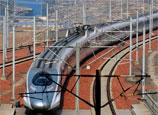
Steady growth
At the 2012 session of the National People's Congress, Premier Wen first lowered China's economic growth target to 7.5 percent, which was decided upon by the National Development and Reform Commission.
The economic growth target had been pegged at 8 percent in the past few years. The lower expectation for 2012 was no surprise. China's economic growth rate had been on the decrease since the fourth quarter of 2010, and there were no signs that the slowdown would see a reversal any time soon.
Distressed by the European sovereign debt crisis and the global economic slowdown, many believed China's economy could suffer a hard landing. No economists and government officials could safely say that wouldn't be the case.
Under such circumstances, the Chinese Government laid emphasis on maintaining steady growth by strengthening economic policies, expanding domestic demand and stabilizing overseas demand.
In 2012, China reduced deposit and loan rates twice to create a looser credit environment for enterprises and lowered deposit reserve ratios on two occasions to free up nearly 1 trillion yuan ($158.7 billion) in liquidity.
Meanwhile, the government has been striving to enlarge investment by speeding up project approvals. On May 20 alone, the NDRC gave the green light to over 100 investment projects. The newly approved projects in 2012 have exceeded 1 trillion yuan. In addition, the Ministry of Finance released new export rebate policies to stimulate exports.
With these measures, several major economic indicators, like industrial added value, investment, consumption and exports, eventually began to rebound in August.
"The GDP is predicted to grow by 7.7 percent this year," according to Li, which is higher than the 7.5-percent goal set at the beginning of the year.
Yao Jingyuan, a researcher at the Counselors' Office of the State Council, said it wasn't easy for China to meet its 7.5-percent goal in a fragile recovery and amid rising protectionism.
















 Ministry urges school safety after fatal van crash
Ministry urges school safety after fatal van crash


![]()
